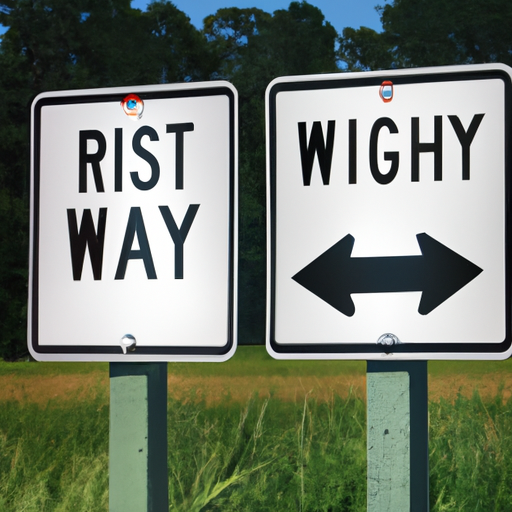Is a Right of Way the Same as an Easement? Unraveling the Legal Distinctions
When it comes to property rights and land use, terms like “right of way” and “easement” are often used interchangeably. However, it is important to understand that these two concepts have distinct legal meanings and implications. In this article, we will delve into the legal distinctions between a right of way and an easement to provide clarity on their differences.
Understanding a Right of Way
A right of way is a legal right granted to an individual or entity to pass through or use another person’s property for a specific purpose. This right typically applies to a specific path or route and is often associated with transportation or access to a particular area. For example, a right of way may be granted to allow a neighboring property owner to access a public road through another person’s land.
In the context of real estate, a right of way is usually created through a formal agreement or by a court order. It is important to note that a right of way does not grant ownership or exclusive possession of the land. Instead, it provides the holder with a limited right to use the designated area for a specific purpose.
Exploring an Easement
An easement, on the other hand, is a broader legal concept that encompasses various rights granted to a person or entity over another person’s property. Unlike a right of way, an easement can include not only the right to pass through or use the land but also the right to do certain acts on the property.
Easements can be classified into different types, such as easements of way, easements of support, or easements of light and air. Each type grants specific rights to the easement holder. For instance, an easement of way allows a person to pass through another person’s land, while an easement of support ensures that a building or structure has the necessary support from an adjacent property.
Distinguishing the Differences
While both a right of way and an easement involve the use of another person’s property, the key distinction lies in the scope of rights granted. A right of way is a specific type of easement that provides a limited right to pass through or use a designated area. On the other hand, an easement encompasses a broader range of rights, including the right to pass through, use, or perform certain acts on the property.
It is crucial to consult with a legal professional to understand the specific rights and obligations associated with a right of way or an easement. The terms and conditions of these agreements can vary depending on local laws and individual circumstances.
Conclusion
In summary, a right of way and an easement are related legal concepts but have distinct differences. A right of way grants a limited right to pass through or use a specific area of another person’s property, while an easement encompasses a broader range of rights. Understanding these distinctions is essential for property owners and individuals seeking to navigate legal matters related to land use and access.




